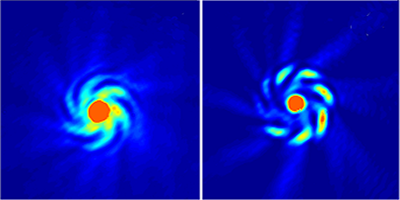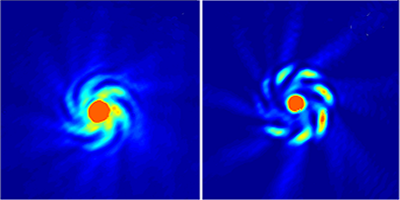Nanostructures Put a Spin on Light
Optical vortices are beams of light that rotate as they propagate, drawing a helical phase front in space that resembles a corkscrew. These beams carry an angular momentum that can spin microscopic objects or drive micromachines. Now, Yuri Gorodetski, at the University of Strasbourg and CNRS in France, and colleagues demonstrate a new way to imprint angular momentum onto a light beam that takes advantage of collective electron excitations (surface plasmons) in specially shaped subwavelength nanostructures. As described in Physical Review Letters, the devices consist of thin helices of metal that transfer their chirality onto the light.
The authors milled either spirals or concentric grooves onto opposite sides of a metallic membrane. Guided by a theoretical model, they chose combinations of shaped nanostructures that would sustain surface plasmons with desired symmetries. When light hit the membrane, it excited plasmons that, in turn, sculpted the wave front of the transmitted beam. By changing the geometry of the nanostructures, the authors were able to generate beams carrying different quanta of angular momentum, adjustable from to (measured in units of ).
This scheme has the advantage that it generates optical vortices that propagate in the far field. And, being only a few microns in size, the nanostructures are compact. The devices could be built into high-bit rate optical communications platforms in which beams with different angular momenta are transmitted on a shared channel – Matteo Rini





